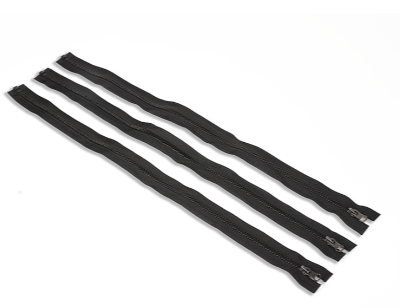In the realm of fasteners, metal zippers stand as a testament to durability and reliability. These essential components have been a cornerstone in various industries, from fashion to outdoor gear, offering secure closures and long-lasting performance. Over the years, advancements in design and technology have propelled metal zippers and pulls to new heights, ensuring they remain indispensable in countless applications.
Metal zippers, characterized by their robust construction and sturdy teeth, have undergone significant evolution to meet the ever-growing demands of consumers. Initially introduced as a practical alternative to traditional closures, such as buttons and hooks, metal zippers quickly gained popularity for their strength and ease of use. Unlike their plastic counterparts, metal zippers excel in heavy-duty applications, withstanding repeated use and exposure to harsh environments.
One of the key features contributing to the durability of metal zippers is their construction. Typically made from materials like brass, aluminum, or stainless steel, these zippers boast good strength and resistance to corrosion. The interlocking teeth, precision-engineered to withstand stress and strain, ensure a secure closure that remains intact even under challenging conditions. Whether it's securing a tent flap against strong winds or fastening a heavy winter coat, metal zippers provide the reliability that consumers rely on.
In recent years, manufacturers have focused on enhancing the functionality of metal zippers to cater to specific needs. Anti-corrosion coatings and treatments have become standard, prolonging the lifespan of zippers exposed to moisture and environmental elements. Additionally, innovations in slider design have led to smoother operation and reduced friction, further improving the user experience.
Metal zipper pulls, the small but essential components attached to zipper sliders, play a crucial role in enhancing usability and convenience. Traditionally crafted from the same materials as the zippers themselves, metal pulls offer durability that plastic or fabric alternatives cannot match. Their ergonomic design allows for effortless grip and manipulation, making it easier for users to open and close zippers with precision.
Moreover, metal zipper pulls serve as a customizable element, providing opportunities for branding and personalization. Whether embossed with logos or adorned with decorative accents, these pulls add a touch of style to garments, bags, and accessories. Beyond aesthetics, manufacturers have introduced innovative features such as built-in grips and extended tabs, further enhancing the functionality of metal zipper pulls.
Outdoor enthusiasts rely on rugged gear capable of withstanding the rigors of nature, making metal zippers the preferred choice for tents, backpacks, and jackets. Similarly, professionals in fields like construction and law enforcement depend on durable closures to secure their equipment and apparel in demanding environments.
Despite the durability and resilience of metal zippers, ongoing research and development efforts aim to push the boundaries of performance even further. Engineers are exploring advanced materials and manufacturing techniques to create zippers that are lighter, stronger, and more resistant to wear and tear. Additionally, advancements in automation and quality control ensure that each zipper meets stringent standards for reliability and consistency.
In conclusion, the evolution of metal zippers and pulls exemplifies a commitment to durability and functionality in the realm of fastening solutions. From their humble beginnings as utilitarian closures to their status as indispensable components in modern manufacturing, metal zippers have stood the test of time. With ongoing innovation driving continuous improvement, these sturdy fasteners will continue to play a vital role in various industries for years to come.
